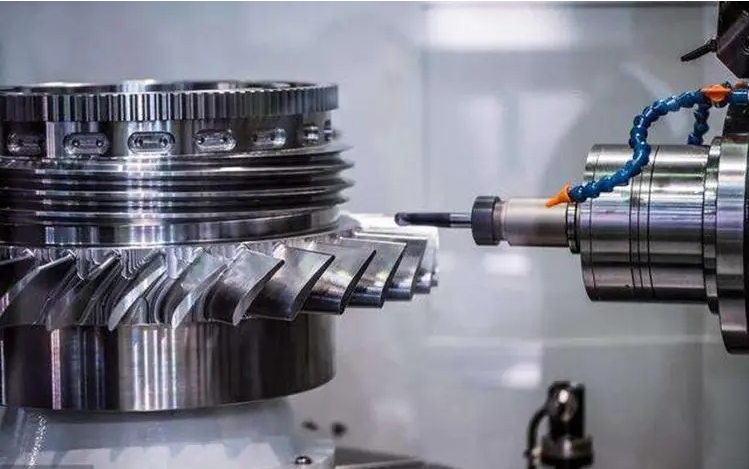High-Speed Connectivity: Metal Stamping Innovations for 5G Communication Equipment Manufacturing+ View more
High-Speed Connectivity: Metal Stamping Innovations for 5G Communication Equipment Manufacturing
+ View more
Date:2023-12-25 20:07
Introduction
In the era of high-speed connectivity, metal stamping innovations are revolutionizing the manufacturing of 5G communication equipment. This article explores the significant role of metal stamping in advancing 5G technology. By examining its impact on antenna design, RF component production, heat dissipation, and miniaturization, we uncover how metal stamping is driving innovation and shaping the future of high-speed connectivity.
1. Antenna Design: Precision Engineering for Enhanced Performance
Metal stamping enables precision engineering in antenna design, ensuring optimal performance in 5G communication. With advanced stamping techniques, intricate designs can be fabricated to meet the complex requirements of high-frequency applications. Metal-stamped antenna brackets, reflectors, and waveguide structures provide structural integrity, reduce signal interference, and enhance radiation pattern control. The result is improved signal reception, increased coverage, and enhanced network reliability.
2. RF Component Production: Streamlining Wireless Communication
Metal stamping plays a crucial role in the production of radio frequency (RF) components used in 5G communication equipment. Through high-speed stamping and automated assembly processes, metal-stamped RF connectors, shielding enclosures, and contact terminals are efficiently manufactured. These components ensure reliable signal transmission, minimize RF losses, and optimize connectivity between devices. Metal stamping streamlines production, reduces costs, and meets the increasing demand for RF components in the rapidly expanding 5G market.
3. Heat Dissipation: Ensuring Efficient Equipment Operation
The efficient dissipation of heat is essential for reliable operation and longevity of 5G communication equipment. Metal stamping techniques enable the fabrication of heat sinks, thermal pads, and cooling fins that effectively dissipate heat generated by high-speed data transfer and processing. By optimizing the thermal management of equipment, metal stamping enhances overall system performance, reduces the risk of overheating, and ensures consistent operation even under demanding conditions.
4. Miniaturization: Enabling Compact and High-Density Designs
Metal stamping drives the miniaturization of 5G communication equipment, facilitating compact and high-density designs. Through precise fabrication of metal components, such as micro connectors, shielding cans, and contact springs, metal stamping allows for the integration of multiple functionalities in a smaller footprint. This miniaturization enables the deployment of 5G technology in various applications, including Internet of Things (IoT) devices, wearable technology, and smart infrastructure, while maintaining reliable signal integrity and efficient connectivity.
5. Advanced Manufacturing Techniques: Meeting Industry Demands
Metal stamping incorporates advanced manufacturing techniques to meet the evolving demands of the 5G communication industry. Progressive die stamping, high-speed stamping, and automated quality control systems ensure efficient and consistent production of metal-stamped components. These techniques improve productivity, reduce lead times, and maintain stringent quality standards. Metal stamping also allows for quick adaptation to design changes and scalability to accommodate the increasing demand for 5G communication equipment.
6. Collaboration and Innovation: Driving the Future of 5G Connectivity
Collaboration among metal stamping experts, telecommunications companies, and technology developers drives innovation in 5G connectivity. By combining their expertise, these collaborations lead to advancements in stamping techniques, material science, and design optimization. Research and development efforts focus on enhancing antenna efficiency, improving RF performance, and developing new materials for miniaturization. Through ongoing collaboration and innovation, metal stamping continues to shape the future of high-speed connectivity, enabling the seamless integration of 5G technology into our digitally connected world.

Conclusion
Metal stamping innovations are revolutionizing the manufacturing of 5G communication equipment, driving the advancement of high-speed connectivity. Through its impact on antenna design, RF component production, heat dissipation, and miniaturization, metal stamping plays a vital role in shaping the future of 5G technology. By enabling precision engineering, streamlining production processes, and supporting collaboration and innovation, metal stamping ensures reliable performance, efficient operation, and compact designs in the era of high-speed connectivity. As the deployment of 5G continues to expand, metal stamping will remain at the forefront, powering the seamless and interconnected digital world we live in.
Share to:
Recommend wonderful blog posts

